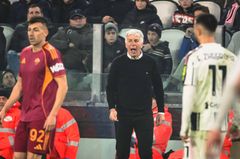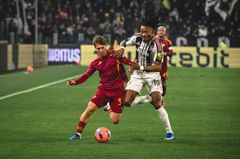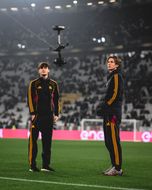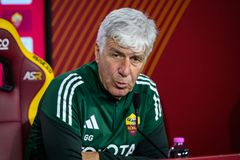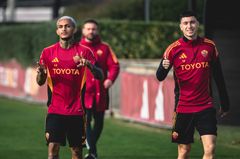

A love story. Nothing more, nothing less. Dino Viola loved Roma more than anything else, from the moment he discovered the club on a tram towards Campo Testaccio until his death on 19 January 1991.
Viola’s love for Roma prevailed even in times of war. In 1942, he was in Pontedera, near Pisa, serving as an official in the Italian Air Force. He was there working on testing of the P. 1088B Piaggio plane, Italy’s only four-engine strategic bomber during the Second World War. It was wartime, but Roma were playing away at Livorno and Pontedera was just 37 kilometres away.
He went by bicycle with his wife, Flora. Thirty-seven kilometres in a bike saddle to see his Roma. It was 7 June. The pair had been married on 30 April that year. Four days previously, Dino had taken Flora to Venice, because there was no more romantic city than Venice. Plus, Roma were playing away at Venezia.
In May 1979, Viola became president of Roma and Roma became everything to Viola. And though it’s true that there was a Roma before and after Paulo Roberto Falcao, what was Roma before and after Viola, the man who brought us Falcao?
Viola was the architect of our dreams, their most ardent custodian until the very end. We all dreamed and when – 41 years down the line – we woke up again, we discovered it was all true. It was a love story, our years with him – aside from the players, the trophies, do you remember the stadium? The lights? The flags?
Some men dedicate their entire lives to a particular cause, and Viola dedicated his to Roma. There are countless photographs of Viola, capturing him staring off into the distance. The best, perhaps, sees Viola in the stands as Roma welcomed Juventus in 1986. With the stadium packed to the rafters, the photograph depicts Viola on his feet, taking in the spectacle. In that moment, Viola truly is the president of all those people – standing out against the crowd, a leader and his disciples.
Of the final goal in Roma’s 3-0 win over IFK Goteborg in the 1983-84 European Cup, he simply said: “I stood up and watched the crowd.” While the whole stadium was watching the best Roma team of all time, he watched Rome watch his Roma.
It seemed to reenergise him, watching the Curva Sud. Viola had taken on all comers for Roma. In the face of the usual arrogance, he won the most magical Scudetto in the history of the club and led us to five Coppa Italia titles. He finished second three times, third twice and reached the final of both the UEFA Cup and European Cup. He taught us to shout the name Roma loud, helped us realise that we were a great club. That we had to feel it was our destiny to be one.
He couldn’t stand it when people derided Roma as Rometta – little Roma – and he had good reason. For Roma is Roma. After Viola, the self-esteem of any Roma fan was never the same again. He led us to heights that nobody had ever imagined we could reach, yet it is a sensation of something not done, not achieved, that will remain forever.
The European Cup, 1984. The Stadio Olimpico.
Perhaps that 37-kilometre bicycle journey from Pontedera to Livorno encapsulates Viola’s immense love for Roma. And perhaps the Curva Sud’s banner on the day after Viola’s death encapsulates Roma’s love for him: “You gave a lot in 12 years, yesterday you gave everything.”
For Viola, even that would not have been enough.
© 2018-2025 Soccer S.r.l. – EU VAT IT09305501000 - all rights reserved. The AS Roma names, logos and artwork are registered or unregistered trademarks of Soccer S.r.l. All other trademarks may be the property of their respective holders.
 Tickets
Tickets
 Shop
Shop













